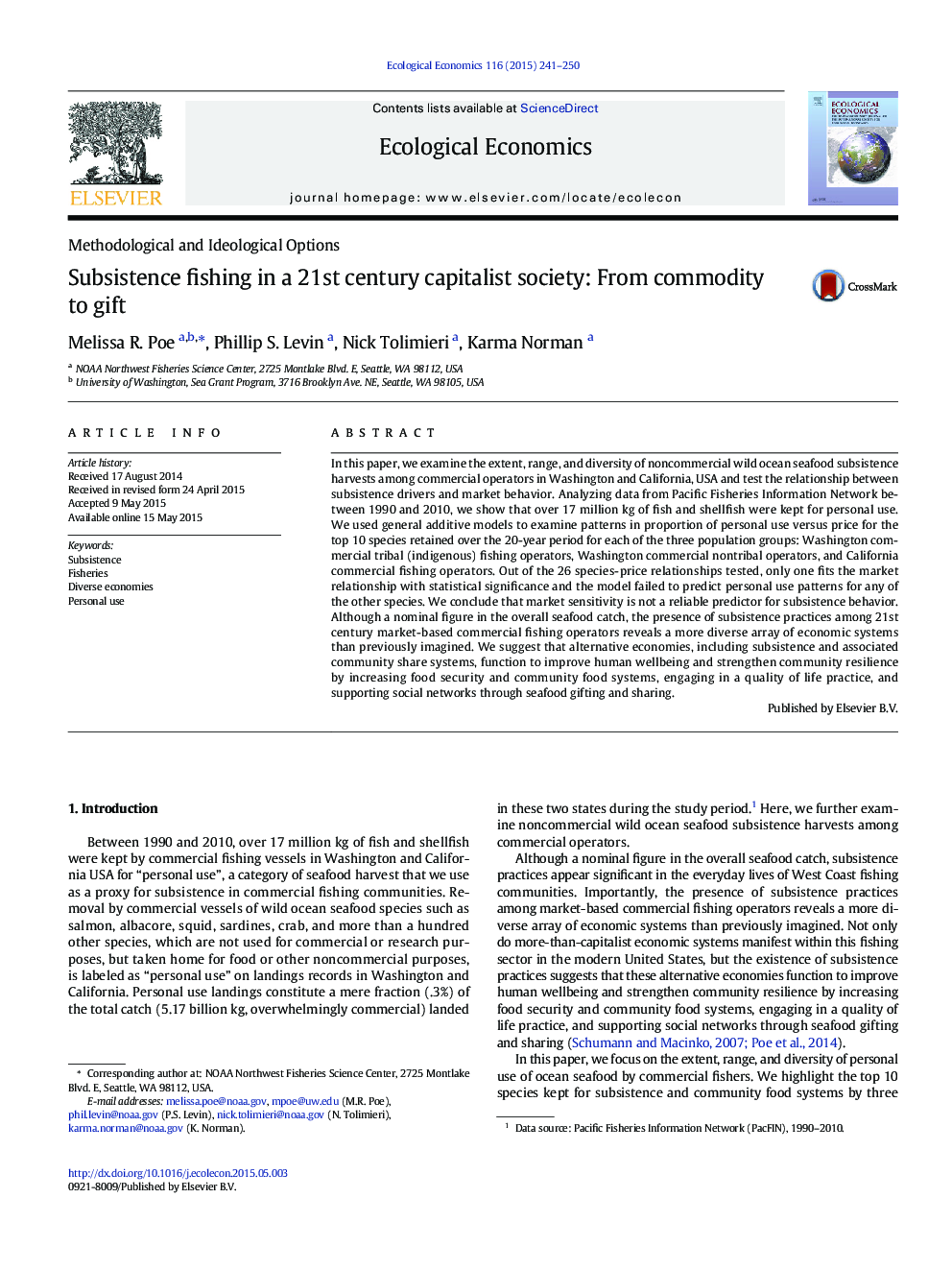| Article ID | Journal | Published Year | Pages | File Type |
|---|---|---|---|---|
| 5049459 | Ecological Economics | 2015 | 10 Pages |
â¢Commercial operators in WA and CA kept over 17 million kg of seafood for personal use between 1990 and 2010.â¢Both tribal and nontribal commercial operators practice subsistence harvesting.â¢Market price is not a reliable driver for subsistence among commercial operators.â¢Subsistence among commercial fishing operators reveals the existence of diverse economies.â¢Diverse economies improve wellbeing by increasing food security and supporting social networks.
In this paper, we examine the extent, range, and diversity of noncommercial wild ocean seafood subsistence harvests among commercial operators in Washington and California, USA and test the relationship between subsistence drivers and market behavior. Analyzing data from Pacific Fisheries Information Network between 1990 and 2010, we show that over 17 million kg of fish and shellfish were kept for personal use. We used general additive models to examine patterns in proportion of personal use versus price for the top 10 species retained over the 20-year period for each of the three population groups: Washington commercial tribal (indigenous) fishing operators, Washington commercial nontribal operators, and California commercial fishing operators. Out of the 26 species-price relationships tested, only one fits the market relationship with statistical significance and the model failed to predict personal use patterns for any of the other species. We conclude that market sensitivity is not a reliable predictor for subsistence behavior. Although a nominal figure in the overall seafood catch, the presence of subsistence practices among 21st century market-based commercial fishing operators reveals a more diverse array of economic systems than previously imagined. We suggest that alternative economies, including subsistence and associated community share systems, function to improve human wellbeing and strengthen community resilience by increasing food security and community food systems, engaging in a quality of life practice, and supporting social networks through seafood gifting and sharing.
